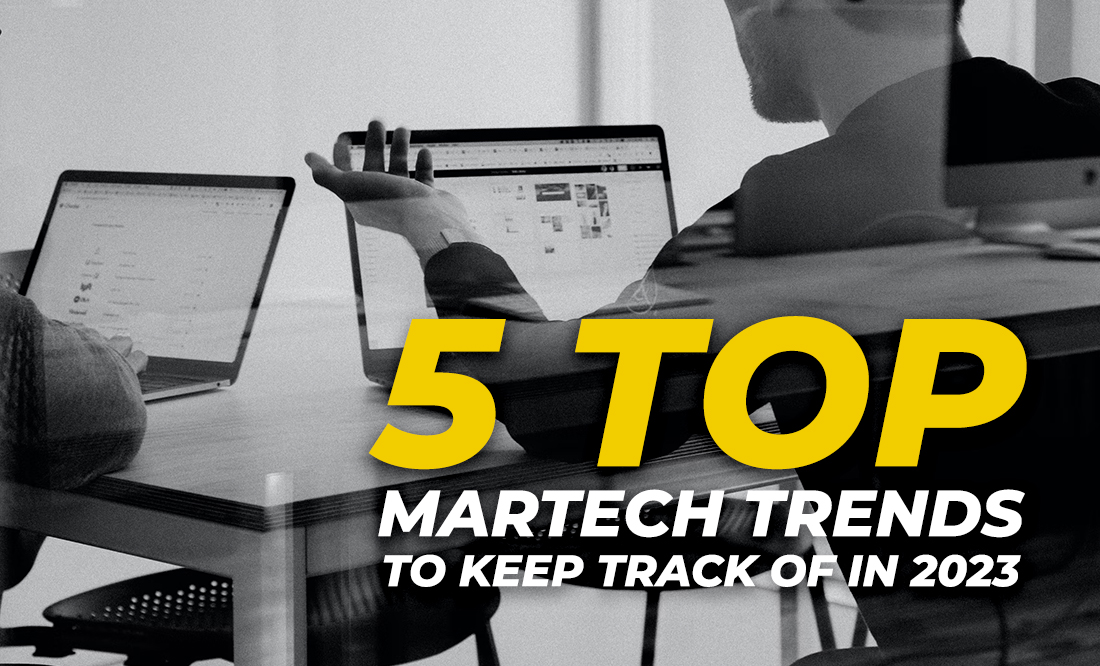Martech in 2022 was reflective of the growing emphasis on customer centricity. Thus, a better understanding of customer behavior, preferred communication channels and frequency of communication will help your brand curate an individualized customer experience and win loyal buyers.
This year is all about striking a balance between continued optimization of brand equity, a consistent focus on customer experience and a conscious evolution of engagement. New platforms, technologies and trends will further impact customer behavior, and marketers must keep up.
o help you empower your teams and drive growth, here are 5 top martech trends to watch in 2023.
Chatbots Improve CX, Drive Sales by Predicting Behavior
AI-powered chatbots will have access to data mines, enabling them to understand the pulse of customers based on brand interactions. Voice-enabled assistants such as Alexa and Siri are already revolutionizing how customers communicate with their favorite brands. Chatbots will adopt similar technology to improve the customer experience and overall satisfaction, leading to more voice interactions and keeping customers engaged.
Retail sales resulting from chatbot-based interactions will reach $112 billion by 2023, representing an annual growth rate of 98%.
–Juniper Research
Brands will leverage chatbots to analyze and predict customer behavior by looking at multiple touchpoints to improve the experience. Machine learning (ML) will help them adapt to changing customer expectations and cost-effectively provide individualized experiences. Brands are using Facebook Messenger or live chat to automate easy payments via chatbots with built-in data security. Chatbots can use this payment information to facilitate conversation-driven cross-selling and upselling. They can also provide transaction details and payment confirmation, resulting in higher customer retention.
AR/VR Gaining Momentum Across Industries
As the metaverse tries to blend augmented reality (AR), virtual reality (VR) and AI, a new 3D immersive experience is blurring the lines between real and reel.
There are multiple examples of blended experiences. For example, gamevertising is rising; think NASCAR advertising on interactive gaming platform Roblox. Brands like Starbucks and Nike are vying for a metaverse experience to offer blended shopping. Moreover, AR is helping customers virtually try on apparel from 3D catalogs, with brands such as Prada, Farfetch and Piaget among the early adopters. Some brands like Poshmark are even enabling in-app ecommerce through Snapchat.
Soon, banks will be able to offer a full 24-hour metaverse experience instead of having to visit a branch. For example, avatars of personnel may soon replace voice-based contact centers, allowing banks to provide customers with detailed information such as statements and forms in real time.
Hyper-Personalization = Next-Level Engagement
The retail industry is increasingly looking at hyper-personalization for a holistic view of the customer journey and experience. It leverages advanced AI and ML to take personalization to the next level, delivering more relevant offers and experiences. In 2023, hyper-personalization will become a go-to strategy for marketers to build loyal customers.
In MoEngage’s “State of Insights-led Engagement in North America” report in 2022, 29.4% of marketers said they’re using a deeper level of attributes such as preferred language, communication channel and content affinity to personalize communication. Marketers can hyper-personalize messaging by looking at the deeper customer, campaign, and journey insights.
Hyper-personalization for engagement campaigns helps each message feel like a unique 1:1 customer engagement. Unlike some essential automated customization tools in martech, hyper-personalization tailors content based on each customer segment. This ensures each individual receives communications they’re interested in, leading to positive engagement, such as increased customer retention and higher conversion.
Reimagining Marketing, One Video at a Time
Video-first content is becoming a key area for marketing as it keeps viewers engaged longer than static posts. Marketers use bite-sized videos to improve engagement and brand exposure, especially attractive to millennials and Gen Z customers. For example, TikTok and Instagram reels are hijacking social media feeds and grabbing consumer attention. Instagram has aggressively optimized its algorithm to prioritize reels and give video creators greater visibility than traditional content alone.
Livestreaming also promises to be a great marketing strategy for consumer brands. When combined with influencers, livestreaming allows potential buyers to interact with advocates and experts, discuss a product’s strengths and weaknesses, and make purchases on the spot.
Similarly, Wyzowl’s report on video statistics indicates that 68% of consumers prefer video content vs. 15% who read text-based content, driving a higher click-through rate.
Increased Reliance on First-Party Data
Consumer complaints regarding data collection and privacy issues are leading to a near future without third-party cookies. Thus, first-party and zero-party data will play an increasingly critical role. After facing numerous privacy lawsuits, Google plans to finally phase out third-party cookies in 2024. As Firefox and Safari began blocking them in their browsers, several brands have already started collecting and using their data.
Zero-party data collected from loyalty/referral programs, buying intent or other sources will be used for product recommendations, creating custom profiles and improving customer service. This in turn assists in making better strategic decisions. Similarly, brands can use first-party data gathered from owned digital channels (website/app, surveys, feedback, newsletter, SMS opt-ins, etc.). This will allow them to offer hyper-personalized experiences, reaching the right customers and fostering relationships by understanding their preferences.
This year will witness more emphasis on data regulations and privacy, leading brands to rethink their marketing strategy and make significant shifts. Boston Consulting Group shares some guidance for brands on how to think about data privacy and value exchange:
Wrapping Up
Despite the economic slowdown, marketing spending will continue to grow. According to Insider Intelligence, B2B martech spend is expected to reach $8.51 billion by 2024, and nearly $18.6 billion on the B2C side. To stay on top of these trends, marketers will need to invest in the right martech stack and partners supporting their current business requirements. Ultimately, you need to listen to your customers and gather insights in order to build a comprehensive strategy.
The following Meagan White, from 2023 provides their research perspective. HERE



